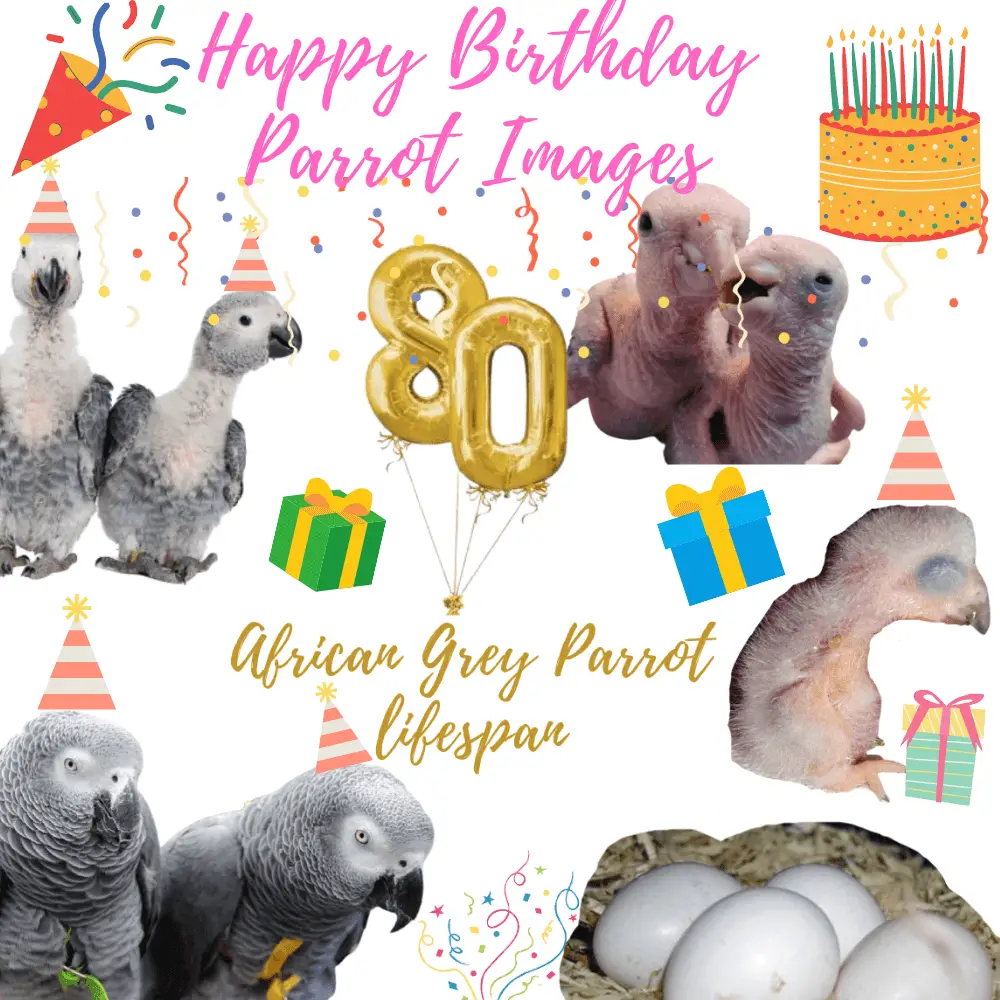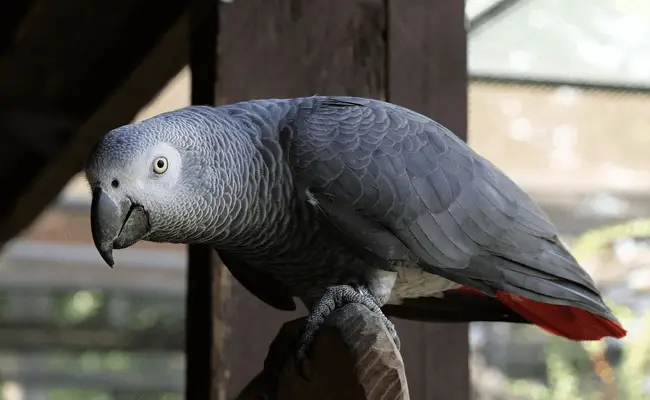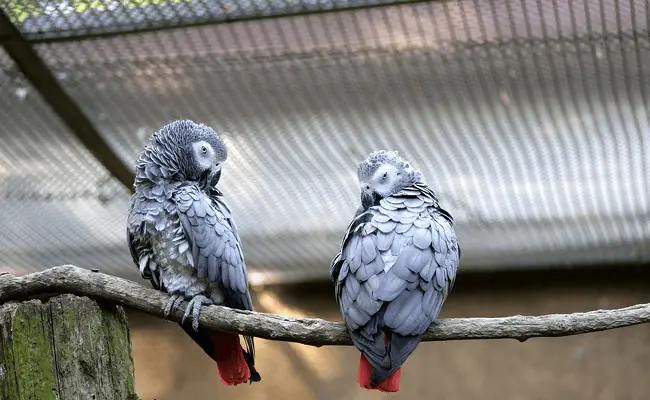My 4 years old Jenny Parrot sing Happy Birthday and then she plays the song on her piano today. I’m proud of her. ?❤️his the smartest parrot
African Grey Parrot said Happy Birthday and plays the song on her piano
SOURCE:African Grey Parrot Pet
The Grey Parrot or African Grey Parrot is a parrot with grey plumage, as it indicates, and very popular with individuals. Sociable, affectionate, intelligent, and curious, it is the most talkative species and is able to repeat the words you teach it while placing them in the right context! Perfect for family life, it can be easily educated. Discover all the secrets of this beautiful bird from Africa and learn how to breed it at home in this complete file.

The Congo Grey Parrot Psittacus Erithacus is a cheerful and cheerful animal that loves company. Coming from the Psittacidae family, it is native to West Africa and can generally live 40 to 50 years, even 80 years for some individuals!
The Grey parrot measures 35 to 42cm for an average weight of 500g. A great speaker, he is also very intelligent and curious. Very sociable, he needs daily interaction to feel good. He quickly learns to repeat the words you say to him and the sounds around him, such as the barking of dogs, the ringing of the front door or the telephone, but also the whistling of certain songs. He is able to put the words he says in the right context, which is why we are talking about intelligence and not pure repetition.
Very affectionate, this animal enjoys living in the middle of family life and hates loneliness. The latter can lead to depression. So if you go away, don’t hesitate to leave her a television on or the radio. By hearing human voices, he will think that someone is present at home and will feel better.
Always remember to Adopt a bird at least 4 months old and banded on the paw. This must contain all the information relating to his identity (his date of birth, the breeder’s identifier, etc.). You must also keep all documents related to its origin and proof of your purchase in order to be in order with the law because the African Grey is a protected species of which each individual sold must be identified.
Smartest parrot

How to breed an African Grey parrot at home?
The arrival of your new bird at home is a very important moment for him and for you. There is often stress and the bird can be disturbed by these changes in places, people, noises, and smells.
The majority of African Grey is adopted at the age of 4 to 6 months. Be sure to transport it in a suitable transport cage that you will open gently once you arrive. Carefully place the bird in its new cage if it is young. If you adopt an older animal, place the open shipping carton in the crate and let it out alone as soon as it wants.
Do not hesitate to speak to him often and calmly to reassure him. He needs to get to know you to trust you fully. At first, it is best to have one person taking care of you, feeding and petting so that you feel safe. You can introduce him to the other members of your household later when he is comfortable.
Bring him fresh water and meals every day, talk to him, and gently pat him. He likes contact, but don’t force him if he needs time to be touched.
During the first 10 days, don’t try to get it out or grab it in your hands or arms. He needs time to understand his new environment and to adapt to his new family.
After 10 days, if your bird is comfortable, you can open its cage and let it out. Make sure beforehand that all doors and windows are closed! Let him go out on his own, without forcing him, but you can encourage and reassure him by talking to him and playing.
Always stay nearby when it comes out, as your furniture, knick-knacks, and plants can be dangerous for this curious animal. Educate him so that he learns to behave well and put him back in his cage if he disobeys you by luring him with a treat or a toy. On the other hand, no need to be violent or yell at her! Stay sweet! as well as the rooms, which are too quiet.
Its cage should be large, given its size, so that it can easily spread its wings and fly a little because it is quite dynamic and likes to move. Choose it solid and robust, with a complex opening system, because it quickly learns to open it to get out thanks to its powerful beak.
Install small wooden toys for him to have fun with and a small mirror because he will like to look at it. Renew them from time to time to avoid routine. Arrange perches of different sizes and diameters to make him feel comfortable according to his preferences. Choose them in natural wood so that he can rub his beak there.
Its feeders must be solid, in terracotta or stainless steel, and placed at the bottom of the cage or hung on the bars, provided they are not installed under the perches to avoid droppings! Avoid all plastic accessories, which are too fragile in relation to their strength.
Your bird will enjoy bathing once a week. You can place it in a sink or a bathtub and let it soak freely but under your supervision!

Quality food
Your Grey Gabon parrot needs quality, well-balanced food. Prefer mixtures for Psittacidae, available from breeders and in specialized stores. Some commercially available seed mixtures may be sufficient temporarily, but they are often too high in fat. Your bird may sort out the seeds it prefers, grow, and/or create nutritional deficiencies over time.
You will find perfectly balanced extruded foods to feed your pet. Top them off with fresh fruit several times a week. Also, don’t hesitate to offer her a little treat every once in a while, like dried fruit or cereal bars.
Complement his diet with mineral stones. This will be a source of calcium and minerals essential to the well-being of your bird.
Wash his bowls every day and pour cool (not cold) water on him and renew it several times a day if necessary. Once a week, pour a vitamin complex into its water to offset any risk of deficiencies and preserve the beauty of its plumage.
The African Grey is faithful. When it forms a couple in the wild, it arranges a trunk in height to live there with his companion or his companion and give life to their young.
A female lays 3 to 4 eggs per lay which hatch after 28 days of incubation. The young are born without feathers and their eyes closed; they will be fed by their parents for about 3 months, until adolescence. They then complete their apprenticeship and leave their parents to find a companion or a life companion.
The Grey parrot and the language
If you want your parrot to speak, you will need to speak to it regularly and make sure you use the same words. This will allow the animal to become familiar with your vocabulary and to repeat your words without difficulty.
Always be patient, gentle, and attentive. Do not force or rush him. Your bird will speak to you when it feels confident and when it decides it is the right time. If you stress it, it will close in on itself and your relationships will suffer.





















